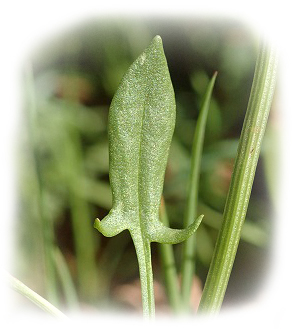Sheep Sorrel, Petite oseille des brebis, Red Sorrel
|
|
Rumex acetosella
Polygonaceae
Legend and Lore From the buckwheat family the tall Rumex plant is called Dock and the short ones are Sorrels. There are close to 200 species in the genus. Rumex refers to the Latin for the European sorrel, but derives from the Greek word Rufo – to suck! Roman sucked the leaves like lollipops. The common name – sheep refers to the hastate leaf (like an arrow head) that resembles a sheep’s narrow head and rounded ears or that sheep also forage this sorrel. The old French word “surelle” refers to sour. The Tudors considered sorrel as the best English vegetable and in Lapland sorrel juice has been used instead of rennet to curdle milk. Egyptians and Romans favoured it for the digestive properties, and in the middle age to prevent scurvy. In the 18th century introduced to New England during the colonisation of North America and rapidly spread throughout the continent. In the Garden Perennial reproducing by seed and spreading by underground roots (stolons), plants growing in full sun will be more “sour” than the ones growing in the shade. Plants have long stalks and arrow like shaped leaves about 2-4cm in length. Flowers are reddish, clustered on narrow elongated spikes. Highly invasive and considered a weed! Sheep Sorrel prefers sunny sites on sparsely vegetated soil that consist of sand or gravel; bare acidic sites like roadsides, steep slopes and beaches. Cut flowers off to maintain leaf production and to curtail propagation. |
|


